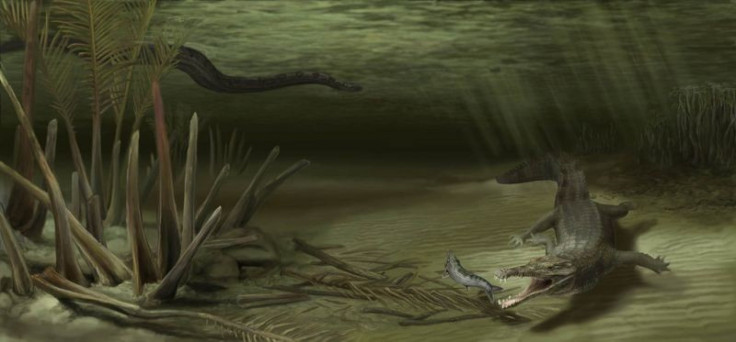Ancient Crocodile Battled World's Largest Snake, Scientists Suggest

It would have been a sight to see: possibly the world's largest snake duking it out with an ancient 20-foot crocodile.
But according to a team of Florida scientists, a newly discovered fossilized crocodile species has been found in the same Colombian coal mine that led to the discovery of the Titanoboa, a snake that could grow over 40 feet long, but is now extinct. The team's findings suggest that members of these two predatory species might have fought to the death 60 million years ago.
The younger individuals were definitely not safe from Titanoboa, but the biggest of these species would have been a bit much for the 42-foot snake to handle, said lead researcher Alex Hastings, a graduate student at the Florida Museum of Natural History and the University of Florida department of geological sciences.
The crocodile, described in Paleontology on Sept. 15, has a long, narrow snout that is full of sharp teeth. The fossils were uncovered in the Cerrejón coal mine and reveal a time when Paleocene reptiles dominated the South American environment.
In order to survive these hard times, the best survival tool is having the ability to adapt, being able to inhabit lots of different habitats in order to change areas and take advantage of resources that others can't, Hastings said. They were able to inhabit new territories, whereas other crocodile groups, which tend to be much more secluded, didn't have the adaptability to survive tough times.
The animals would have lived in freshwater areas in the ancient rain-forest ecosystem, an adaptation that seems to have come with the changing climate after the extinction of dinosaurs.
The same thing that snuffed out the dinosaurs killed off most of the crocodiles alive at the time, Hastings said in a press release. The dyrosaurids are one of the few groups to survive the extinction and later become more successful.
© Copyright Thomson Reuters 2024. All rights reserved.





















